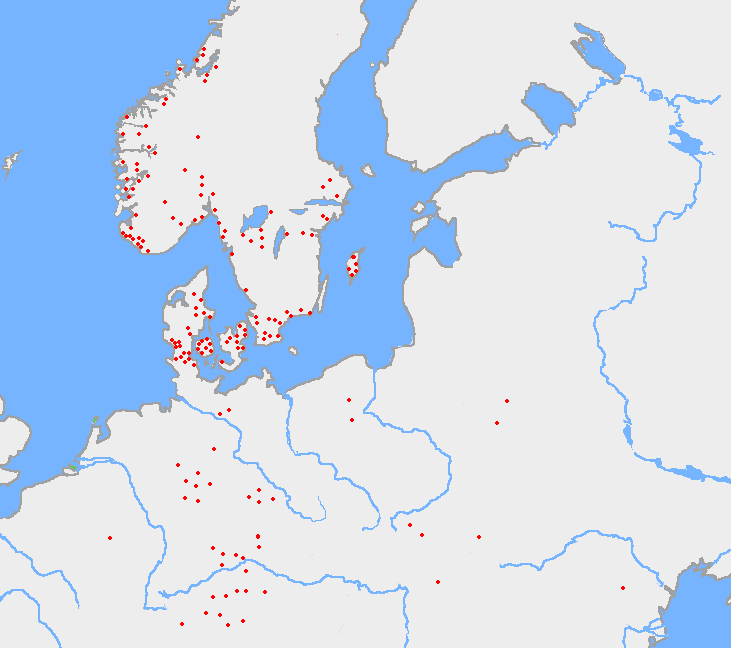|
ᚦ
The rune is called Thurs (Old Norse '' Þurs'', a type of entity, from a reconstructed Common Germanic ') in the Icelandic and Norwegian rune poems. In the Anglo-Saxon rune poem it is called thorn, whence the name of the letter þ derived. It is transliterated as ''þ'', and has the sound value of a voiceless dental fricative (the English sound of ''th'' as in ''thing''). The rune is absent from the earliest Vimose inscriptions, but it is found in the Thorsberg chape inscription, dated to ca. AD 200. The rune may have been an original innovation, or it may have been adapted from the classical Latin alphabet's ''D'', or from the Rhaetic's alphabet's ''Θ''. Name In Anglo-Saxon England, the same rune was called ''Thorn'' or "Þorn" and it survives as the Icelandic letter Þ (þ). An attempt has been made to account for the substitution of names by taking "thorn" to be a kenning (metaphor) for "giant". It is disputed as to whether a distinct system of Gothic runes ev ... [...More Info...] [...Related Items...] OR: [Wikipedia] [Google] [Baidu] |
Elder Futhark
The Elder Futhark (or Fuþark, ), also known as the Older Futhark, Old Futhark, or Germanic Futhark, is the oldest form of the runic alphabets. It was a writing system used by Germanic peoples for Northwest Germanic dialects in the Migration Period. Inscriptions are found on artifacts including jewelry, amulets, plateware, tools, and weapons, as well as runestones, from the 2nd to the 8th centuries. In Scandinavia, beginning in the late 8th century, the script was simplified to the Younger Futhark, while the Anglo-Saxons and Frisians instead extended it, giving rise to the Anglo-Saxon runes, Anglo-Saxon futhorc. Both the Anglo-Saxon futhorc and the Younger Futhark remained in use during the Early Middle Ages, Early and the High Middle Ages respectively, but knowledge of how to read the Elder Futhark was forgotten until 1865, when it was deciphered by Norwegian scholar Sophus Bugge. Description The Elder Futhark is named after the initial phoneme of the first six rune names: /f/ ... [...More Info...] [...Related Items...] OR: [Wikipedia] [Google] [Baidu] |
Rune
Runes are the letters in a set of related alphabets, known as runic rows, runic alphabets or futharks (also, see '' futhark'' vs ''runic alphabet''), native to the Germanic peoples. Runes were primarily used to represent a sound value (a phoneme) but they were also used to represent the concepts after which they are named ( ideographic runes). Runology is the academic study of the runic alphabets, runic inscriptions, runestones, and their history. Runology forms a specialised branch of Germanic philology. The earliest secure runic inscriptions date from at latest AD 150, with a possible earlier inscription dating to AD 50 and Tacitus's possible description of rune use from around AD 98. The Svingerud Runestone dates from between AD 1 and 250. Runes were generally replaced by the Latin alphabet as the cultures that had used runes underwent Christianisation, by approximately AD 700 in central Europe and 1100 in northern Europe. However, the use of runes persisted for spe ... [...More Info...] [...Related Items...] OR: [Wikipedia] [Google] [Baidu] |

